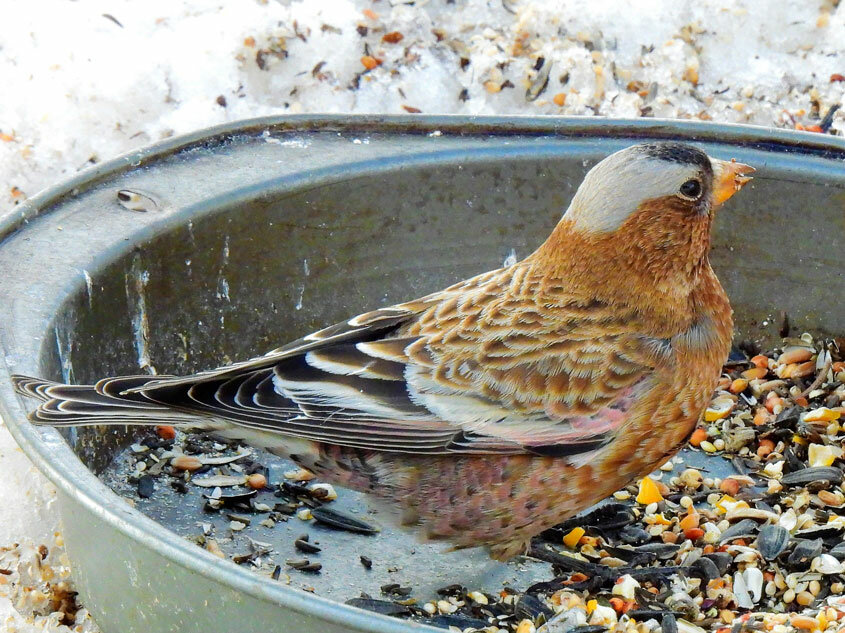
Photo courtesy Charles Martinez
This week’s Bird of the Week, compliments of the Weminuche Audubon Society and Audubon Rockies, is the gray-crowned rosy-finch.
Throughout their range, winter is the best time to find these amazing birds. They nest in the highest parts of the highest mountains in North America at elevations with fierce winds and blowing snow that most of us don’t visit.
Rosy-finches move in response to snow levels in winter and are forced downslope only when snow becomes too deep to locate food. Traveling in flocks, they seem to float down out of the sky to forage on open ground for seeds of grasses and weeds or to land on seed feeders.
In North America, three species of rosy-finches, each with different breeding ranges, are recognized. The gray-crowned nests in the mountains of Alaska, the Cascades, the Rockies, and the Sierra Nevada and on remote islands off Alaska. In winter, they roam through open areas of the West in mixed species flocks and are spotted in our area between December and early April.
Adult males of the gray-crowned species are a rich brown color with pink on the belly and rump and in the wings, with black on the top of the head and neck, and with a gray patch that extends across the back and sides of the head. Females appear similar but not as colorful.
In summer they are found living near snowlines, where they hide their nests in cracks or holes between boulders and on cliffs. To feed their young in these barren environments, they rely on catching insects which ride wind currents to higher elevations and drift onto snow fields.
A warming climate is shrinking the habitat of these birds and of other high-elevation animals. Researcher Benjamin Freeman, who has studied the upward range shifts of birds, has described the plight of mountain birds as “riding an escalator to extinction.”
For information on events, visit www.weminucheaudubon.org and www.facebook.com/weminucheaudubon/.